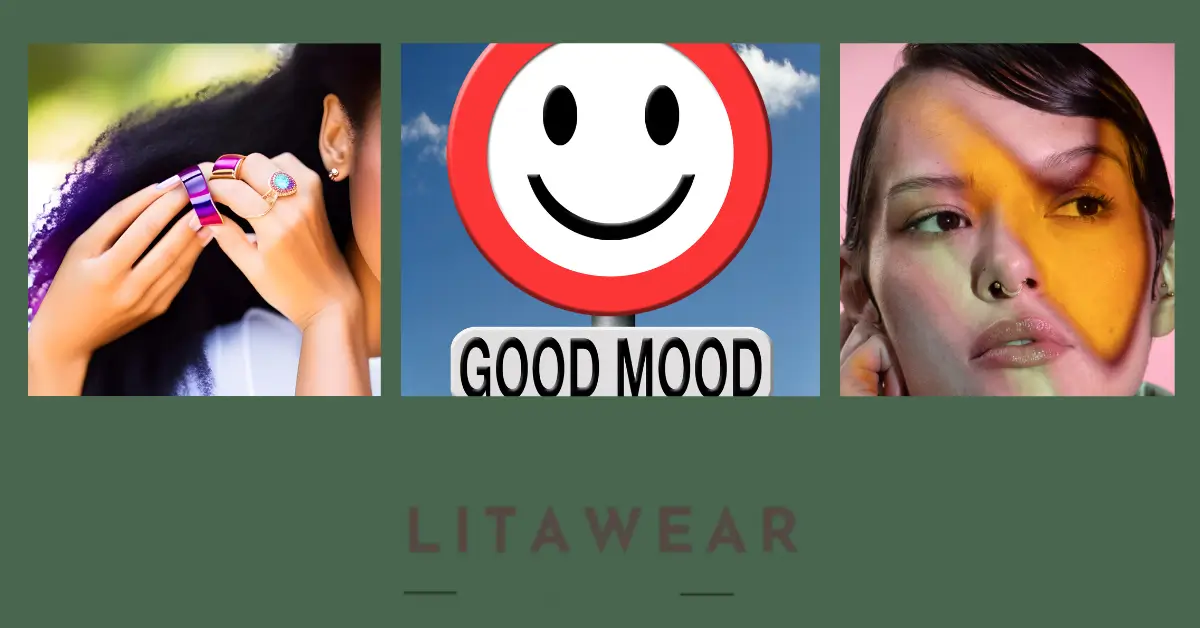Have you ever worn a mood ring and watched as it changed color depending on how you felt? You may have wondered about the connection between mood rings and emotions, plus colors.
It turns out that there is a scientific explanation for why mood rings change color.
Below we’ll delve into the science behind mood rings emotions and the meaning behind the different colors as well as the role of color psychology in our emotional well-being.
The Bursting Science Behind Mood Rings and Emotions
Mood rings were first invented in the 1970s by New Yorks Maris Ambats and Josh Reynolds, only being challenged by jeweler Marvin Wernick of the same city a decade before.
The rings gained popularity because they were believed to reflect changes in the wearer’s emotional state.
Although mood rings do not have any scientific basis for detecting emotions, the liquid crystals in mood rings change color based on temperature, which can be influenced by factors such as body heat, ambient temperature, and skin moisture.
Recent studies have shown that mood rings’ color changes are indeed influenced by changes in the wearer’s emotions.
Researchers found that when participants were feeling anxious or stressed, their fingers’ temperature increased, causing the mood ring to turn amber or gray.
However, more research is needed to determine the accuracy of mood rings in detecting emotions.
Decoding the Meanings Behind the Different Colors
Even though mood rings may not be entirely accurate in detecting emotions, they can still be fascinating because they reflect the connection between emotions and colors.
Here’s what the different colors on a mood ring might mean:
- Blue: Feeling calm and relaxed
- Green: Feeling average, normal, or balanced
- Amber: Feeling nervous or anxious
- Gray: Feeling anxious or stressed
- Black: Feeling tense or overworked
- Red: Feeling excited or passionate
This is just a short color list. For a more in-depth breakdown, including tables, charts, and other visuals visit my post on mood ring color meanings.
The Power of Color Psychology in Emotions
Color psychology is the study of how colors affect our emotions and behavior. Marketers often use color psychology in their branding and advertising because different colors can evoke different emotions.
For instance, red is often associated with excitement and passion, while blue is associated with calmness and trustworthiness.
In addition to influencing our behavior, color psychology can also affect our emotions.
For example, researchers have found that exposure to green environments can increase positive emotions and reduce stress levels.
Similarly, a study found that red clothing can boost confidence levels in women (Source).
Harnessing the Power of Colors to Improve Your Mood
While mood rings may not be entirely accurate, the idea behind them is still relevant. Colors can have a powerful effect on our emotions, and we can use this knowledge to improve our mood.
If you’re feeling anxious, you might try surrounding yourself with calming blue tones, while wearing something red can boost your energy levels.
Similarly, yellow can promote happiness and optimism, while purple can enhance creativity.
Mood Rings and Emotions Conclusion
In essence, mood rings may not be scientifically accurate in detecting emotions, but they can still provide insight into the connection between emotions and colors.
By understanding the science behind mood ring jewelry and the meanings behind different colors, we can use this knowledge to our advantage in promoting emotional well-being.
Whether we’re using color psychology to create a calming environment or wearing a particular color to boost our mood, colors have a powerful effect on our emotions.
By harnessing the power of colors with a mood ring, we can improve our emotional health and live a more fulfilling life.
This year might be a great jewelry gift to yourself, I´ll tell my beloved sisters as well.
Mood Rings and Emotions FAQ
Do mood rings really work?
While mood rings are not scientifically accurate in detecting emotions, they are still an interesting concept that reflects the connection between emotions and colors.
How do mood rings change color?
Mood rings contain liquid crystals that change color in response to temperature changes, which are believed to be related to changes in the wearer’s emotional state.
What emotions are associated with different colors on mood rings?
Blue is associated with calmness and relaxation, green with balance and normalcy, amber with nervousness and anxiety, gray with stress and tension, black with being overworked or exhausted, and red with excitement and passion (for more on the topic get my mood ring chart here).
Can wearing a mood ring improve my emotional well-being?
While mood rings may not directly improve your emotional well-being, understanding the connection between emotions and colors can help you use color to your advantage in promoting emotional well-being.
Can mood rings be used as a therapy tool?
While mood rings are not in any way, type, or form a replacement for professional therapy, they can be used as a playful tool for self-reflection and understanding one’s own emotional state.
For real mental issues, I strongly advise seeking professional help.
Do different cultures have different interpretations of color and emotions?
Yes, different cultures have different associations between color and emotions. For example, in Western cultures, black is associated with mourning and sadness, while in some Asian cultures, white is associated with death and mourning.
Are there any scientific studies on the connection between colors and emotions?
Yes, there are mood ring scientific studies on the subject of color psychology and how it affects our emotions and behavior (see reference above).
However, more research is needed to fully understand the complex relationship between color and emotions.
Here is an in-depth, but brief article we wrote for you about how mood rings actually work, scientifically.
Can mood rings be customized for individual emotional states?
While there are no widely commercially available customizable mood rings, there are companies and jewelers that offer personalized jewelry that incorporates color psychology and individual emotions.

